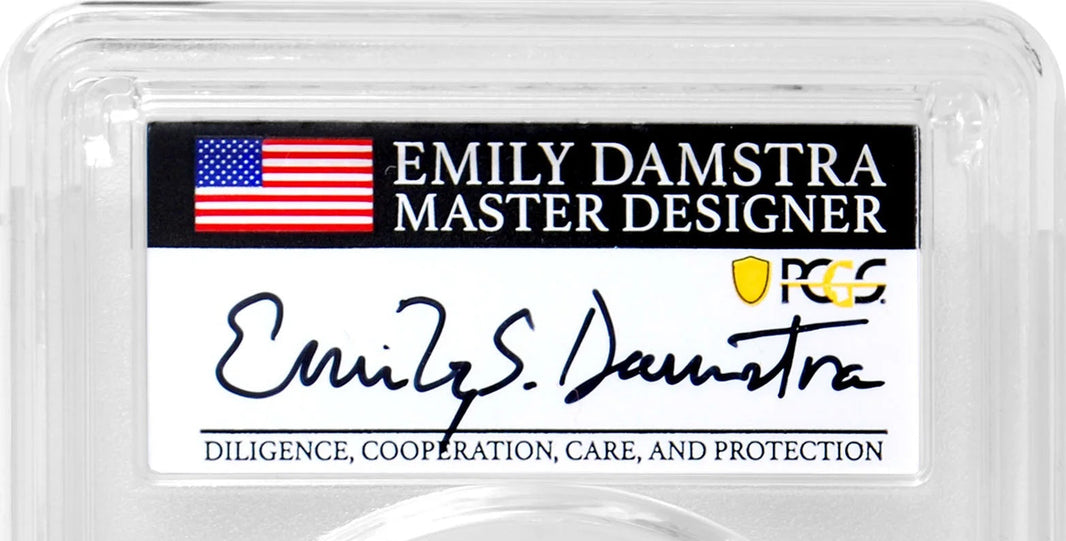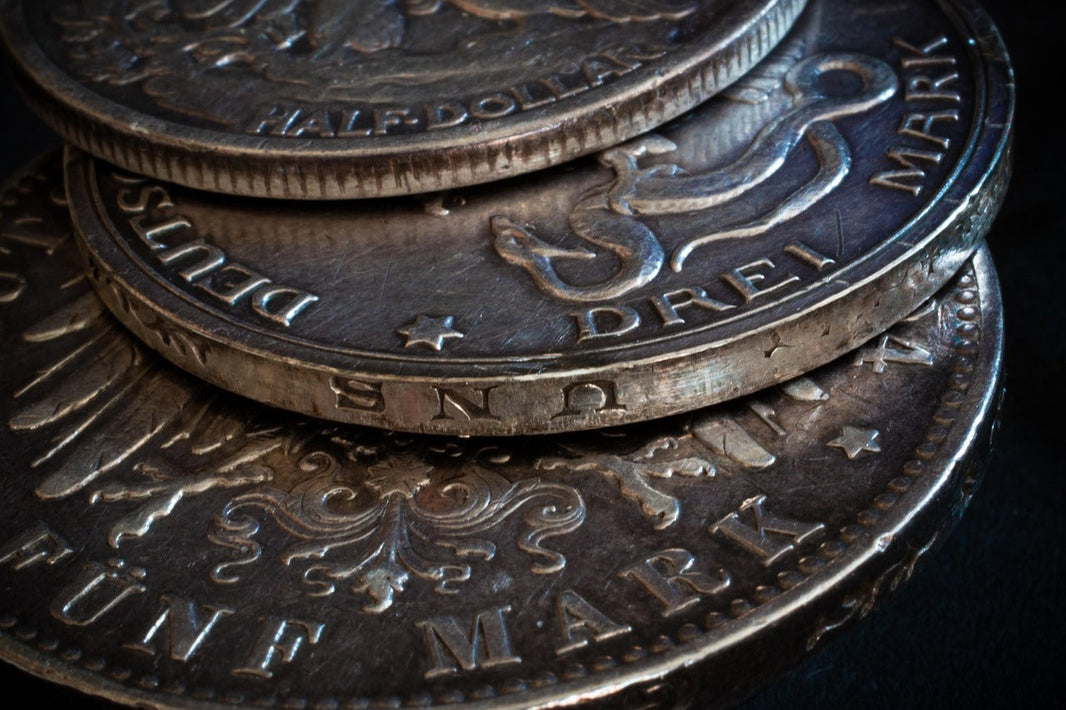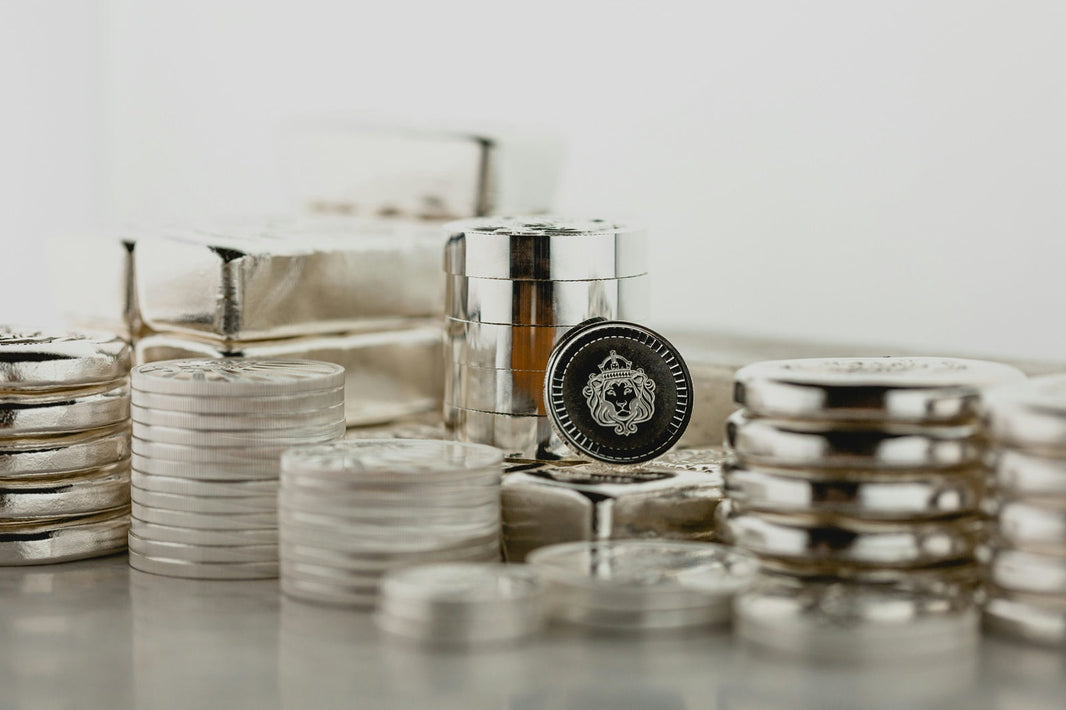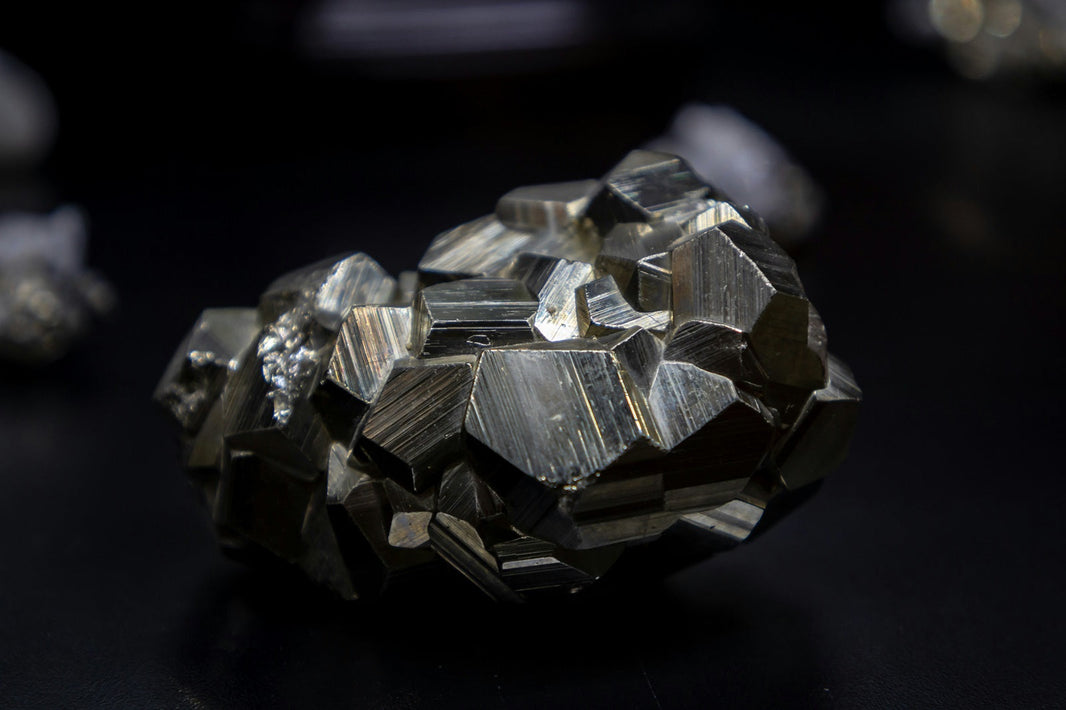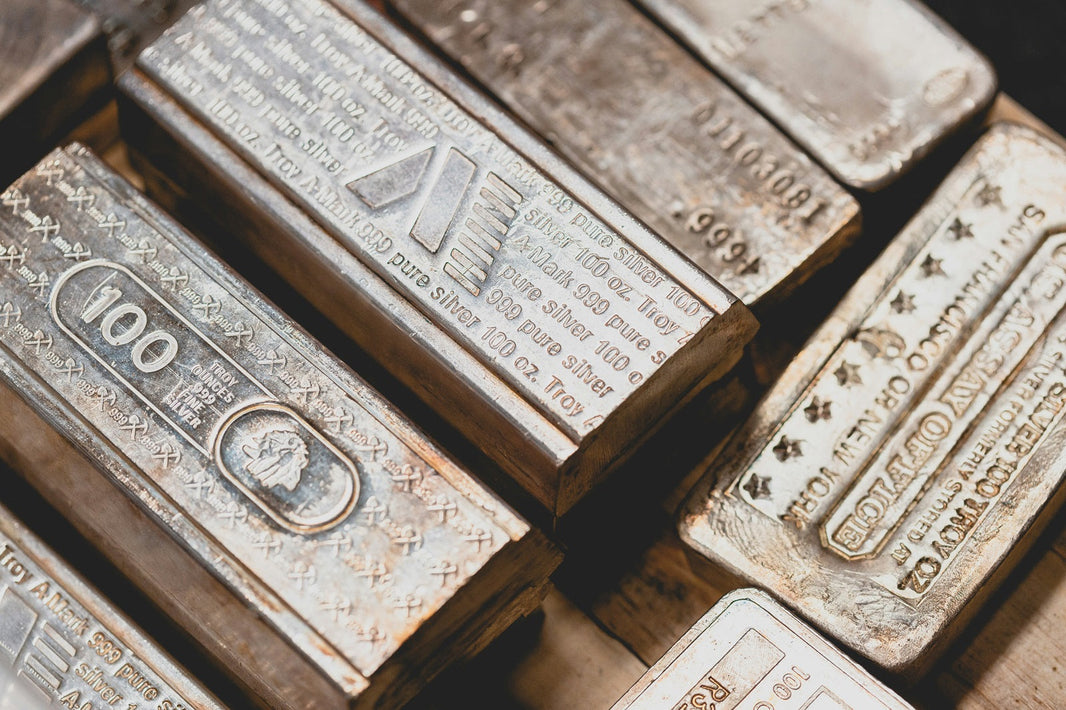Coin Collecting Terminology
- Accumulation: Refers to a miscellaneous grouping of coins, often associated with hoarding rather than serious collecting.
- AD: An abbreviation for “acid date.”
- Adjustment Marks: These marks result from filing a planchet before striking, reducing its weight to the standard. Early U.S. coinage occasionally underwent this practice.
- AG: ANA grading standard, signifying “Almost Good.”
- AG3 - AG: ANA grading standard, ranging from Almost Good Level 3 to Almost Good.
- Album: A book-like holder with slots designed for storing coins.
- Album Friction: Also known as “slider.”
- Album Slide Marks: Another term for “slider.”
- Altered: The deliberate modification of a coin or note, often with the aim of increasing its face value or numismatic worth.
- ANA: Acronym for the American Numismatic Association.
- ANACS: Originally focused on authentication, ANACS (American Numismatic Association Certification Service) later added grading. It now operates as a third-party grading service under this name.
- ANACS Certificate: A uniquely numbered opinion of authenticity and/or grade issued by the ANA Certification Service.
- Ancients: A general term encompassing coins struck worldwide from approximately 600 B.C. to circa 450 A.D.
- Annealing: The process of heating a die or planchet to soften the metal before coin preparation or striking.
- Anvil Die: Typically the lower die (though sometimes the obverse), responsible for the slightly better-struck impression due to minting physics.
- Arrows: A design element often found in the left claw of the eagle on various United States coins.
- Arrows and Rays: Refers to the quarters and half dollars of 1853. The rays were later removed due to the complexity of the design affecting coin striking.
- Arrows at Date: Arrows added to the dies on either side of the date, indicating a weight increase or decrease.
- Artificial Toning: Coloration intentionally added to a coin through chemical treatment or other alterations.
- Ask: The selling quotation for a coin on trading networks, pricing newsletters, or other platforms.
- Attributes: The components contributing to a coin’s grade, including marks (hairlines for proofs), luster, strike, and eye appeal.
- AU: Shorthand for “almost uncirculated.”
- Auction: A coin sale where buyers bid against each other, as opposed to fixed-price transactions from catalogs or advertisements.
- Authentic (Coin): An original, non-counterfeit coin.
- Authentication: The process of verifying the genuineness of a coin or other numismatic item.
- Bag Mark: Surface marks, often nicks, acquired by coins when they come into contact with others in a mint bag. Common on large silver and gold coins (also called contact marks or keg marks).
- Bag Toning: Coloration acquired by a coin from the chemicals in the storage bag. Colors may include blue, red, yellow, or others.
- Bank Note: Paper money issued by a bank.
- Bank-Wrapped Rolls: Rolls of coins enclosed in original wrapping by a Federal Reserve Bank, making them more collectible due to their intact and untouched state.
- Bar: Non-numismatic precious metal bullion.
- Bas Relief: Design elements raised within depressions in the field.
- Basining: Refers to polishing a die, either to achieve a mirrored surface or to remove clash marks.
- Billon: An alloy containing less than 50% silver, often combined with copper.
- Bit: Pieces of eight physically cut into eighths, with each piece representing one bit.
- Blank: A metal piece prepared for coinage before the final stamping.
- Blemishes: Minor nicks, scratches, or imperfections on a coin’s surface.
- Blue Book: This refers to the Handbook of United States Coins, an annual collector’s price guide with a distinctive blue cover.
- BM: An abbreviation for “Branch Mint,” excluding the U.S. Mint in Philadelphia.
- Bourse: A marketplace where dealers engage in coin transactions with each other and the public, often seen at coin shows.
- Brilliant Uncirculated (BU): Describes a pristine, mint-condition coin that has never been in circulation.
- Broadstrike/Broadstruck: A coin struck without a firmly seated collar, resulting in outward spreading while retaining all design details.
- Brockage: An intriguing phenomenon where a newly struck coin “sticks” to a die, leaving a mirror image impression on the opposite side. Subsequent strikes distort this mirror effect.
- Bronze: An alloy of copper, zinc, and tin.
- Bullion: Uncoined precious metal in the form of bars, plates, or ingots. Also used to denote the precious metal content of a coin.
- Bureau of Engraving and Printing: The U.S. Treasury Department agency responsible for currency production.
- Business Strike: A coin minted for circulation.
- Bust: Refers to the head, including part of the collar bone.
- Cameo: A coin, often struck as a proof, featuring a frosted or satiny central device surrounded by a mirror-like field.
- Canadian Numismatics: Post-confederation Canadian coin collecting.
- Cartwheel: The light pattern reflected by mint state coins’ flow lines, resembling spokes of a wheel. British pennies and 1797 two-pence pieces exhibit unusually broad rims.
- Cast Counterfeit: A coin duplicated using molds of both sides of a genuine coin, then cast in a base metal.
- CCD (Certified Coin Dealer): A professional service that authenticates and grades coins.
- Cherrypick: To find and purchase coins with rare die varieties, often priced appropriately compared to more common varieties.
- Choice: An adjective describing an exceptionally select specimen within a given grade. For instance, Choice AU-55 represents a premium About Uncirculated coin (typical About Uncirculated being AU-50).
- Chop Mark: A symbol added to money by someone other than the issuing government, indicating authenticity.
- Circulated: Denotes money no longer in mint state due to normal handling and exchange.
- Civil War Tokens: Private issue pieces, roughly the size of U.S. cents, circulated during the Civil War due to a scarcity of small change.
- Clad: Composed of multiple layers, such as the copper-nickel over copper composition in current U.S. dimes, quarters, and halves.
- Clash Marks: Outlines or traces of designs from the opposite side of a coin, resulting from die clashes.
- Classic Era: Refers to silver and gold U.S. coins minted between 1792 and 1933 (gold) or 1964 (silver).
- Cleaned Coin: Typically refers to coins that have undergone abrasive cleaning, impacting their numismatic value.
- Cleaning: Any process that removes foreign substances, corrosion, or toning from coins, including solvents, dipping, and abrasive materials.
- Clip: A coin, planchet, or blank that is missing a portion of metal from its periphery due to an error during blank production. Various types of clips exist, including curved (the most common), ragged, straight, elliptical, bowtie, disk, and assay clips.
- Clipping: The deliberate smearing or shaving from the edge of gold and silver coins. Patterns and mottoes are often included on the edges to discourage this practice.
- Cleaned (Clnd): A shorthand term indicating that a coin has been cleaned.
- Coin: A piece of metal stamped with a distinctive mark, representing a fixed value and weight.
- Coin Set: A grouping of coins that share a common trait, such as the year of issue, place of issue, denomination, etc.
- Coin Show: An event where numismatic items are bought, sold, traded, and often exhibited.
- Collar: A device in a coining press that restricts the outward flow of metal during striking and places the design (if any) on the edge of the coin.
- Collection: The total numismatic holdings of an individual or a specific type of coins.
- Colonial: Refers to coins issued by any colony, particularly those produced by European colonies in the Americas during the 17th and 18th centuries.
- Commemorative: A coin with a design commemorating a person, place, or event.
- Condition Census: A list of the finest specimens of a particular coin value.
- Conjoined (Jugate): Refers to coins with images of two individuals or elements joined together.
- Contact Marks: Small surface scratches resulting from coin movement within the same bag or bin.
- Copper Coin: A coin containing over 95% pure copper. Lower-grade alloys are typically termed bronze or brass.
- Corroded (Corr): Indicates that a coin has experienced corrosion.
- Counterfeit: An imitation of a coin or note intended to circulate as genuine money.
- Counterstamp: A design, group of letters, or other mark stamped on a coin for special identification or advertising purposes. Counterstamped coins are graded similarly to regular coins, but the nature and condition of the counterstamp must also be described.
- Crown: A general term encompassing most silver coins weighing about 20 to 30 grams and measuring approximately 33 to 50 millimeters in size. The term now also applies to nickel alloy coins of similar weight and dimensions.
- Cud: A raised lump of metal on a coin caused by a broken piece of a die.
- Cupro-Nickel (or Copper-Nickel): An alloy composed of copper and nickel, as seen in U.S. 5-cent coins (excluding half dimes) and Canadian 5-cent coins produced since 1982.
- Currency: Refers to paper money.
- Current: Coins and paper money still in circulation.
- Damage: Refers to any physical change to a numismatic item, such as scratches, nicks, dings, cleaning marks, holes, or pitting.
- Date: The year(s) displayed on a coin, usually corresponding to the year it was minted.
- DDO (Doubled Die Obverse): An obverse die that exhibits doubled images in one or more places.
- DDR (Doubled Die Reverse): A reverse die that displays doubled images in one or more locations.
- Dealer: A person or company regularly involved in buying and selling numismatic collectibles.
- Deep Mirror Prooflike (DMPL): Describes coins with highly reflective fields, similar to those struck as proofs.
- Delamination: Occurs when metal is missing or peeling from the surface due to incomplete bonding or impurities in the planchet.
- Denarius: An ancient Roman silver coin weighing about 3 grams, roughly the size of a U.S. dime but thicker.
- Denomination: The face value assigned to a coin.
- Denticles: Tooth-like raised features just inside the rim of some coins (also known as dentils).
- Design: The arrangement of devices, lettering, and other elements on a coin.
- Designer: The creative mind behind a coin’s design.
- Device: The principal element (such as a portrait, shield, or emblem) on the obverse or reverse of a coin.
- Die: A cylindrical piece of steel bearing the incuse design of one side of a coin.
- Die Chip: A tiny fragment that breaks off from a die during striking causes metal to flow into the resulting cavity, creating a small raised bump on the coin's surface.
- Die Clash: When upper and lower dies in a coin press collide without a planchet between them, they can impress partial design details onto each other. These details then appear as mirror images on coins struck from the clashed dies.
- Die Crack: A thin fissure on the surface of a die. Coins struck with such a die display a narrow raised line that corresponds to the crack.
- Die Erosion: The wear that a die experiences from repeated use in the minting process.
- Die Flow Lines: Refer to the lines formed by the flow of metal during the striking of a coin.
- Die State: Describes the condition of a die at a specific point in its usage life.
- Die Polish: Small raised lines found in the field of a coin, resulting from polishing a die to remove chips, clash marks, and other imperfections.
- Dipping: The process of cleaning a coin by immersing it in a liquid that removes surface molecules, often a solution containing thiourea.
- Disme: An early spelling of the word "dime," referring to a coin worth one-tenth of a dollar.
- Dmg: Abbreviation for damaged.
- DMPL: Refer to the term "deep mirror prooflike."
- Doctored: A term usually implying that a numismatic item has been artificially enhanced, often fraudulently.
- Double Denomination: A rare error where a normally struck coin is restruck by dies of a different denomination.
- Double Die: A term that sometimes refers to a coin struck with a doubled die and other times to machine doubling. Given the significant difference in value, buyers should clarify the meaning when a coin is described this way.
- Double Eagle: A U.S. gold coin with a $20 face value, first minted in 1849 and last officially minted in 1932.
- Doubled Die: A die that has doubled details, such as letters or numerals, due to differences between multiple hub impressions during its creation. Coins struck from such a die exhibit these doubled features.
- Drachma: An ancient Greek silver coin weighing about 3 grams, similar in size to a U.S. dime but thicker.
- Drift Mark: An elongated streak of discoloration on a coin, caused by impurities in the die used during striking.
- Eagle: A U.S. gold coin with a $10 face value, first minted in 1795 and last minted in 1933. Also refers to the current $50 face value gold bullion coin.
- Ed: Refer to the term "environmental damage."
- Edge: The border area of a coin's surface, sometimes referred to as the "third side." U.S. coin edges may be reeded, lettered, or plain.
- EF: Refer to the term "Extremely Fine."
- Electrotype: A counterfeit coin produced through the electroplating process.
- Encapsulated: Describes a coin that an independent grading service has sealed in a plastic holder.
- Engraver: A person who carves a design into a coinage die.
- Environmental Damage: Corrosion or other surface damage caused by exposure to the elements.
- E Pluribus Unum: A Latin phrase meaning "Out of many, one," which appears as a motto on many U.S. coins.
- Error: Any coin, token, medal, or paper money item that shows evidence of a mistake made during its manufacture.
- Exergue: The lower portion of a coin or medal, often separated from the field by a line and containing the date, mintmark, or engraver's initials.
- Exonumia: Collectible tokens, medals, and other coin-like objects that are not official government currency.
- Exonumist: A collector interested in numismatic items that fall outside the scope of official government-issued currency.
- Extremely Fine: An American Numismatic Association (ANA) grading standard for coins in well-above-average condition.
- Eye Appeal: A subjective term referring to the overall attractiveness or visual appeal of a coin.
- F: Refer to the term "Fine."
- Face Value: The monetary worth of a coin or note at the time of its issue.
- Fantasy Piece: Coins whimsically struck by mint officials, often for amusement or novelty.
- Fiat Money: Currency that is not backed by a physical commodity and is deemed legal tender by government decree.
- Field: The flat, background area of a coin, medal, or token.
- Fine: An ANA grading standard for coins.
- Fishscale: A term for Canadian 5-cent silver coins or U.S. 3-cent silver coins.
- Flan: The British term for a coin blank or planchet.
- Flip: A soft plastic holder typically used for storing a single coin.
- Flow Lines: Microscopic lines on a coin's surface created by the outward flow of metal during striking.
- Foreign: Any numismatic piece originating outside the United States.
- FR: An ANA grading standard meaning Fair.
- Fractional Coin: A coin with a face value that represents a fraction of the base currency unit, generally made of silver.
- Fractional Currency: Paper money with a face value of less than one dollar.
- Frost: A frosty appearance on a coin's raised areas, created by sandblasting or acid-treating the die.
- Fugio Cent: The first coin issued by the authority of the United States, produced by contractors in 1787.
- G: An ANA grading standard meaning Good.
- Galvano: A large, epoxy-coated plaster relief model of a coin, token, or medal, used in the electrodeposition process to create dies.
- Gem: Refers to coins in superb condition, including mint and near-mint examples.
- Grade/Grading: Terms summarizing the condition of a coin or numismatic item, as well as the process of evaluating and assigning a grade.
- Grading Standards, ANA: A set of abbreviations and definitions indicating coin condition standards devised by the American Numismatic Association.
- Greysheet: A price guide for U.S. coins used in dealer-to-dealer transactions, also known as the Coin Dealer Newsletter.
- Hairlines: Light scratches on the surface of a coin.
- Half CentL: U.S. coin with a face value of one two-hundredth of a dollar, first minted in 1793 and last minted in 1857.
- Half Dime: A U.S. coin with a face value of five cents, minted between 1794 and 1873, originally called a half disme.
- Half Eagle: A U.S. gold coin with a $5 face value, first minted in 1795 and last minted in 1929.
- Hard Times Token: An unofficial large cent-size copper token struck in various types during 1833-1844, serving as de facto currency and often bearing political or advertising legends.
- Hobo Nickel: A coin, usually a U.S. buffalo nickel, that has been physically altered to create a different image.
- Holed: A coin that has had a hole drilled through it, usually for use in jewelry.
- Holder: Any device designed for the storage and sometimes display of numismatic items.
- Hub or Hob: A metal object with the intended coin design in relief, used to produce dies.
- Impaired Proof: A proof coin that shows wear or damage from circulation or handling.
- Incuse: Design elements that are impressed into the surface, the opposite of relief.
- Intrinsic: Referring to the net metallic value of a coin, as opposed to its face value.
- Investor: A person who buys numismatic items primarily for profit rather than aesthetic appreciation.
- Iridescence: A pastel-colored glow seen on a coin.
- Jefferson Nickel: A U.S. five-cent coin designed by Felix Schlag, in continuous use since 1938.
- Jugate: Overlapping portraits on a coin facing the same direction.
- Key Coin: The most important and often most expensive coin in a particular series.
- Key Date: The rarest and often most expensive coin in a series, such as the 1909-S VDB Lincoln cent or the 1916-D Mercury dime.
- Knife Edge: Refer to the term "wire edge."
- Krause: A numismatic publishing company known for its Standard Catalog of World Coins.
- Lamination Flaw: Refer to the term "delamination."
- Large Cent: A U.S. coin with a face value of one cent, minted from 1793 to 1857, primarily composed of copper and larger in diameter than the current U.S. quarter.
- Laureate: A figure on a coin wearing a crown of laurel leaves.
- Legal Tender: Money that must be accepted in payment of a debt, as defined by law.
- Legend: Lettering on a coin that is not the denomination or issuing nation.
- Lettered Edge: A design feature where the coin's edge contains inscribed text, typically indicating denomination or a patriotic slogan.
- Lib: Short for Liberty Head.
- Lint Mark: A threadlike depression on a coin's surface caused by lint during the striking process.
- Loonie: A popular name for the Canadian dollar coin.
- Lot: An auction house-assigned number for items to be sold in a particular sale.
- Loupe: A small magnifying glass used by numismatists and jewelers.
- Lt: Abbreviation for light.
- Luster: The brilliance of a coin, resulting from light reflecting off die flow lines.
- Sac: Short for Sacagawea Dollar.
- Scr: Shorthand for scratch.
- Scrip: Paper currency, usually of denominations less than one dollar, issued as substitutes for currency by private persons or organizations.
- Sea Salvage Coin: A coin retrieved from the ocean, usually from a shipwreck, which may have pitted surfaces caused by exposure to sand.
- Series: Coins of the same major design and denomination, including every combination of date and mintmark minted, e.g., Morgan dollars.
- Sheldon Scale: A numerical grading system ranging from 1 to 70, created by Dr. William H. Sheldon to denote proportional values of large cents minted from 1793 to 1814 and subsequently adapted as a general grading scale.
- Shinplaster: Canadian fractional banknotes.
- Shotgun Rolls: Rolls of coins that contain double the normal amount of coins in a roll. Their length makes them look like a shotgun barrel.
- Shroff Mark: Indian term for chop mark.
- Sight Seen: Available for examination to a potential buyer before a purchase decision is made.
- Sight Unseen: Not available for examination to a potential buyer before a purchase decision is made, as is usually the case with mail order transactions.
- Silver Certificate: A note (paper money) once redeemable for its face value in silver.
- Silver Clad: A clad coin with one layer containing silver, such as U.S. halves struck from 1965 to 1970.
- Silver Coin: A coin consisting of more than 50 percent silver content.
- Silver Eagle: A coin produced by the U.S. Mint beginning in 1986 containing one ounce of silver and having a nominal face value of $1 (not released for circulation).
- Slab: A coin certified by a professional grading service as authentic and encapsulated in a sealed hard plastic holder also containing a label, the service's opinion of its grade, and other information.
- Slider: A coin with very slight traces of wear, such that it almost passes for a specimen that has never been circulated.
- SP: Shorthand for specimen.
- Specie: Precious metal used to back money, usually gold or silver.
- SPL: Shorthand for semi-prooflike.
- Split Grade: Different grades for the obverse and reverse sides.
- Spot: Short for spot price; a small area of corrosion or foreign substance.
- Spot Price: The market price for immediate delivery of a commodity such as a precious metal.
- Spurious: A false piece made to deceive, often an original creation rather than a copy of a known item.
- Spread: The difference between buy and sell prices on the same item(s) of a dealer, broker, etc.; the extent of separation between impressions on a doubled die.
- Steel Cent: Refers to pennies made in 1943 and 1944 that were struck from steel and coated in zinc.
- Steelie: See steel cent.
- Stella: A U.S. gold coin pattern with a face value of $4, minted in 1879 and 1880.
- Store Card: A token bearing a business name and/or address, and often intended as a local or ad hoc medium of exchange.
- Striations: Incuse marks caused by rolling bars while creating planchets.
- Strike: The process of impressing the design from a die into a planchet to make a coin, token, or medal; the completeness of detail (as in weak strike, full strike, etc.) created during this process.
- Strike Doubling: See machine doubling.
- Tab Toning: Refers to commemorative coins stored in round-tabbed cardboard holders, which resulted in toned coins with a round center.
- Target Toning: Term used for coins with rings of coloring that fade toward the center, creating the effect of an archery target.
- Tetradrachma: An ancient Greek silver coin weighing about 13 to 17 grams, roughly the same size as a U.S. quarter but three times thicker.
- Thaler: German for dollar, referring to large European silver coins; the origin of our word "dollar."
- Thumbing: The rubbing of skin oil into a coin in an attempt to hide contact marks.
- Token: A coin-like object redeemable for a particular product or service such as transportation on a bus or subway; an unofficial coin issued by a business or town to be used as small change; e.g., in 17th-19th century Britain, and in France in the 20th century.
- Token Coinage: Coinage the intrinsic value of which is less than its face value.
- Toning: Color acquired from chemical change on the surface.
- Trade Dollar: A U.S. coin with a face value of $1, minted from 1873 through 1885 specifically for commerce in the Orient; a U.S. coin with a face value of $1, minted from 1895 through 1935 specifically for commerce in the Orient.
- Trime: A U.S. coin with a face value of 3 cents minted in predominantly silver alloys from 1851-1873.
- Truncation: The sharply cutoff bottom edge of a portrait.
- Tube: A plastic container designed for storing a roll or other quantity of coins of the same size.
- Type Coin: Any coin of a particular design and denomination, usually one of the more common dates.
- Type Set: A collection of coins of various designs. Rather than try to complete the series, the goal of the type collector is to obtain at least one example of several different types.
- Ultra High Relief: Alternative of "Extremely High Relief."
- Ultra Rarity: Any coin or related item in which only a few exist.
- UNC: See uncirculated.
- Uncirculated: Never circulated; without any wear.
- Uniface: Showing a design on one side only.
- Universal Rarity Scale: A scale that measures degree of rarity. A 10 point, ascending scale (higher number corresponds to increased rarity) that goes from UR1 readily available to UR10 unique (literally one of a kind).
- URS: Short for Universal Rarity Scale.
- Used: Describes coins of various levels of wear/tear and circulation.
- VAM: Any variety of U.S. silver dollar described in the book Morgan and Peace Dollars by Van Allen and Mallis.
- Variety: Any coin struck from a die pair that differs from others with the same date and mintmark, such as exhibiting die doubling, different style letters or numerals, or a repunched mintmark.
- Vectures: Transportation tokens.
- VF: Shorthand for Very Fine, an ANA grading classification.
- VG: ANA grading standard meaning Very Good.
- VG08 - VG: ANA grading standard, Very Good Level 8 to Very Good.
- VG10-VG+: ANA grading standard, Very Good Level 10 to Very Good Plus.
- Vis-a-Vis: Coins with heads or busts of two individuals facing each other.
- Want List: A tabulation of collectibles sought by a collector, often including limits on condition and/or price.
- War Nickel: See wartime nickel.
- Wartime Nickel: Five-cent coins minted during World War II with a special metal content so that the metal nickel could be diverted for wartime use.
- Water Mark: A design put into paper at the manufacturing stage by pressing it while wet between rollers bearing the design.
- Wear: Metal lost during handling and contact with other objects.
- Whizzing: Alteration by mechanical polishing to include a shiny surface.
- Wire Edge: Any coin with a thin, sharp rim that is caused when metal flows between a die and a collar during striking.
- World Coins: Coins issued by various nations, as in a collection comprised of such coins.
- XF: ANA grading standard meaning Extremely Fine.
- Year Se: A privately (as opposed to government) packaged coin set consisting of a specimen of each coin from each Mint issued for circulation in a particular year.



